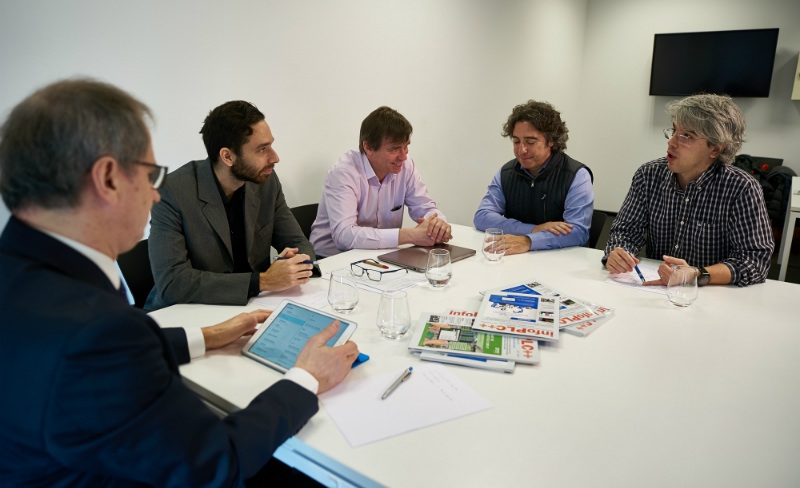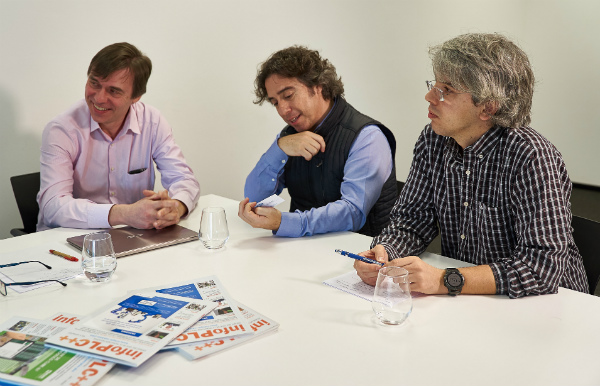Round table InfoPLC++, 14/2/2018. The technologies advance and the possibilities of deploying digital architectures to go a step beyond the plant operations does not depend so much on the available solutions, but on the possibility of finding a definitive fit to the relationship between the vision of IT and OT, both technologically and culturally. Digitization necessarily involves facilitating the meeting between both worlds, and in this sense, proposals such as OPC-UA stand out as interesting alternatives to connect both worlds in a robust manner, as an essential basis for Industry 4.0 that from all sectors are expected.

In the meeting on technological perspectives for 2018, InfoPLC ++ brought together four experts who contributed their vision in relation to whether this year will be the definitive takeoff of the digital industry. Participants included Fernando Álvarez, account manager of Vester Business, distributor of Matrikon OPC Europe; David Badia, CEO of InLean; Pere Tuset, academic director of the Master in Industry 4.0 in the Studies of Computer Science, Multimedia and Telecommunications (EIMT), and senior researcher of the WiNe group (Wireless Networks) in the Internet Interdisciplinary Institute (IN3), both of the Open University of Catalonia ( UOC); Jaume Rey, CEO of Nexiona and Xavier Pi, member of the 4.0 Industry Commission of the Enginyers de Catalunya and member of the Editorial Board of InfoPLC ++. The objective: to reveal the technological trends that will set the tone for the industry in 2018, and among them, to delve into the possibilities that OPC-UA opens up for the digitalization of plants.
Fernando Álvarez started the debate by explaining that although the company has been working on the connection between transactional and plant data for more than 20 years, it is now that the need is more flagrant. For this reason, the classic OPC has evolved towards the OPC-UA "which allows both worlds to be integrated in a more natural and safe way". SDK solutions, development software for servers and OPC-UA clients are already available in the market, not only on Windows, but also on other operating systems such as Linux. "It is in this way that Matrikon is concentrating its expectations for 2018," Álvarez explained, confirming that the industry is highly interested in solving the IT / OT gap in order to begin to redesign itself as a digital environment.
David Badia, CEO of Inlean, agrees with Fernando Álvarez that the proposal of OPC-UA is not new, however, it is not until recently that it begins to be demanded as a real alternative for industrial control. "OPC-UA will set a trend in the coming years, not only can it stand as an alternative communication for the OT world, but it wants to cover the middle segment, between IT / OT, where now there is nobody able to give an answer".
The truth is that this evolution is a process, will 2018 be the year of unstoppable convergence? Asked Xavier Pi, moderator of the table. For Badia, if until now we had seen the consolidation of protocols based on IP and Ethernet, now inevitably we have to talk about the treatment that will be given to the data that circulate: real-time, historical data, alarms … "The work of organizations such as the OPC Foundation to incorporate not only a communication of 'flat' data, but also with some added value that in the case of vertical technologies for communications in sectors such as packaging, will be key ".

In his opinion, the combination of open technology capabilities offered by OPC-UA with the proposal of more specific solutions for certain industries with very particular demands is critical: "it allows to unite two worlds, very implemented systems -Profibus, Modbus, ProfiNet, DeviceNet ….- that fulfill very specific communications features with reliability and security in a local environment, with the most open communication needs that come from the world of IP protocols with the Internet behind ". Among the most consolidated 'companion' user specifications are those of industrial segments such as instrumentation, embedded devices, packaging, intelligent buildings (BACnet), or just published, such as the one that connects with OML's PackML. This ability to respond to very specific vertical segments is what would allow OPC-UA to emerge as the reference protocol for Industry 4.0.

You can read the full transcript of the round table published in InfoPLC ++ in Spanish: https://www.infoplc.net/plus-plus/mesas-redondas/item/105171-tendencias-tecnologicas-industriales-2018
You can see the round table in video in Spanish:
